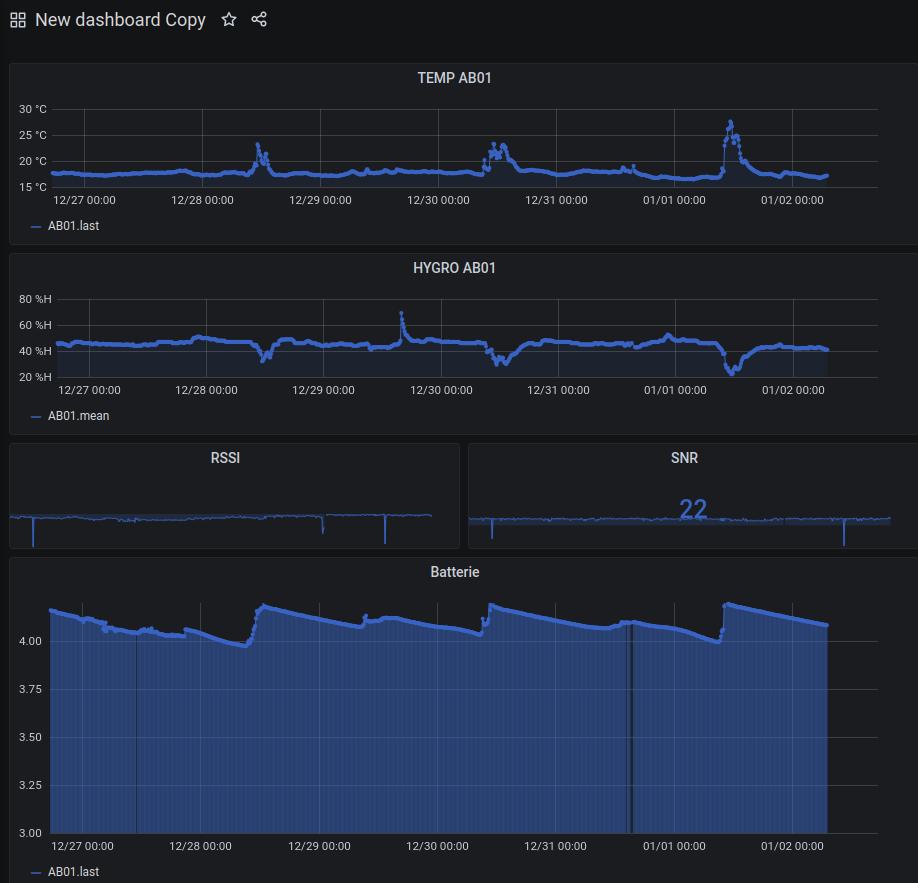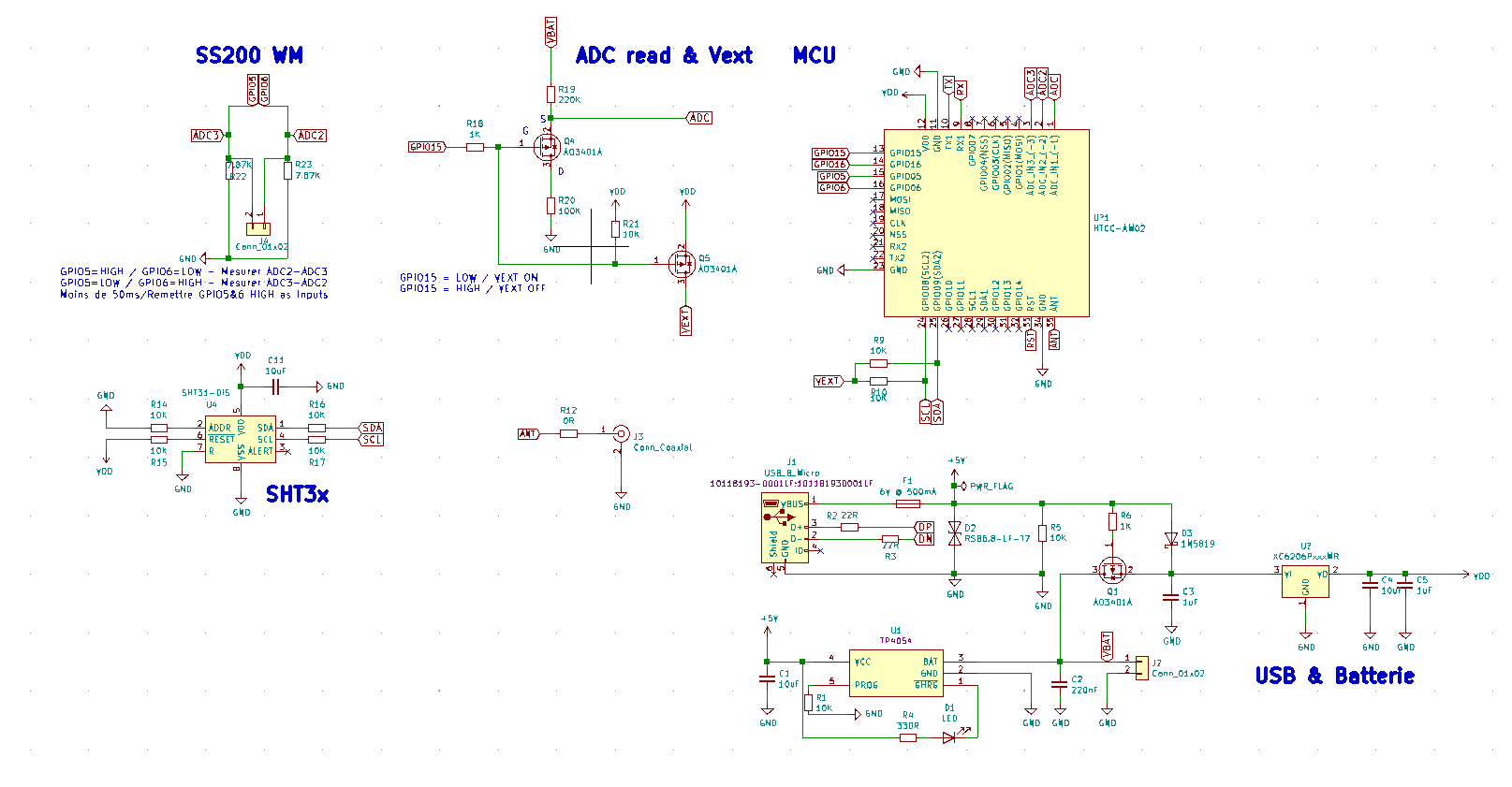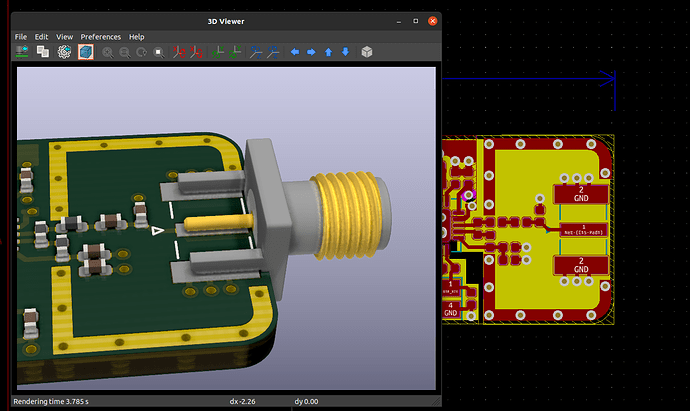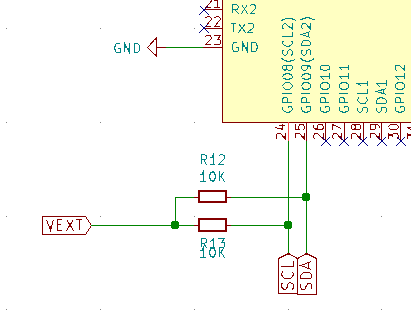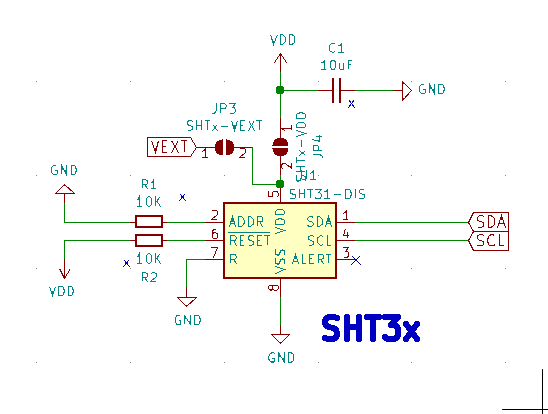First of all, happy new year to all the geeks here!
I’m a french biologist so please take consideration that electronics stay a hobby to me, maybe my questions to community will help other users and improve IoT.
I really considering making a small batch of custom PCB for plant monitoring -personnal use, non commercial.
During my tests, I success to have running HTCC-AB01/HTCC-AB02 with solars panels, Li-Po batteries and sensors like SHT31 or BME monitoring.
I use Heltec HT-M00 gatewayHT-M00 via TTN and getting my datas periodically with the combo TTN mqtt/NodeRed/Influxdb/Grafana. All of these running on a Raspbery Pi.
I will eventually share my sources for doing that praticaly but Andreas Spiess make a video last year that help me a lot InfluxDB/Grafana from Andreas Spiess
Please keep in mind that I’am not a programmer or IT guy but I love these subjects especially when it works! There is a screen shot of a quick dashboard made in Grafana for the proof of concept.
I have a 3D printer and I will make a custom case to integrate solar panel (5.5V/6V), custom PCB with HTCC-AM02, maybe custom antenna. My goal is to integrate this on top of an irrometer 200SS Watermark sensor.
@avalente Help me a lot for the pratical use with the ADC pins of the Cubecell modules please read his publication Low-Cost LoRaWAN Node for Agro-Intelligence IoT
I read a lot about Kicad and on this forum and @jasonXu @jackyruth @Sivaelid and find interestings posts especially Custom PCB reflow
As I aldredy say, this is a hobby and I offer myself a binocular microscope and micro soldering irons.
Do you have recommandations for my future design in Kicad. I make a pre-draft in Kicad just to start to copy circuitery from Reference design Does the documentations ar good to go for PCB design or it contains small errors ?
My questions are in bulk:
-Should I stricly copy the recommended design (Boot circuit, usb interface) or simplify my circuit with an external pogo jig programmer (I have aldrady made one with 3d printer for another project) and get rid of the maximum components like buttons?
-I will mature my design of Kicad and I will order a batch of 5 PCB on Jlcpcb. Some of components from the reference design seems to not appear on the Jlcpb assembly service.
Time for deliveries are not an issue for me, so will I prefer order my PCB assembled or sourcing each parts from differents sellers and solder myself?Again, I’m a newbie for finding alternatives to a proposed components so maybe some of you can share how you solve this type of issues for your PCB design. (I love soldering and I want to make the most of steps of the project). LCSC JLCPCB assembly parts
Do you have advices to start a design from scratch. I think one of my goal is to get a Pcb with the smalest footprint possible and get rid of the maximum components just to have the smallest case poissible on top of my irometer… I will only conserve these parts.
-HTCC AM02
-SHT31 or another temp/hygro sensor
-Using ADC’s from the module to read only one irrometer Watermark value.
-Solar charging and solar panel
-Bootloader Autoboot circuit (if necessary)
-Usb side for programming or external pogo pins connectors.
-Integrate RF circuitery correctly and add an SMA connector for external antennas.
-One cell battery (18650 or small LiPo that I have on my dev boards running well).
I dig some interestings videos on PCB design in Kicad and I think to adopt a similar pcb form factor
Kicad sources STRF Video tutorial I know some of you are proffessionals but this type of video helps a lot to understand PCB designs software and manufacturers requirements for order a small batch of PCB.
Making the 3D print case on top of the irrometer and waterproofing electronics will be final steps but I have experience from past projects.
What kind of difficulties/design tips can you share about the HTCC-AM02 module which seems to me an excellent solution for my simple plant monitoring. Do you have success reference design or PCB designs to share for examples.
For the last time I’m in plant molecular biology so any of your answers of tips will be a good start for me. Thanks a lot, I will eventually continue to share future steps in this topic.
Alex

